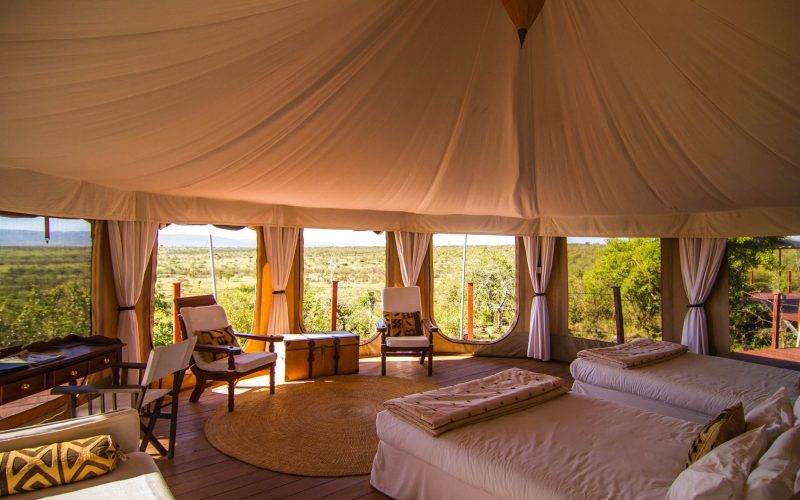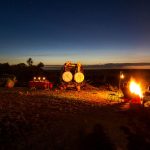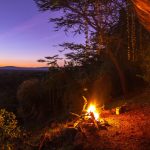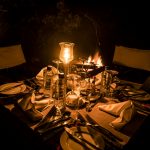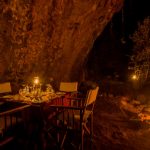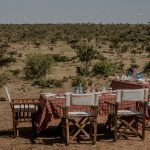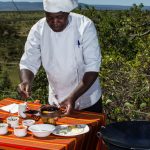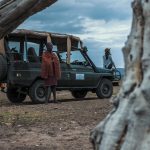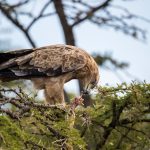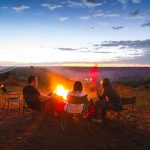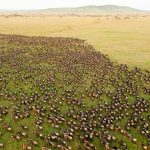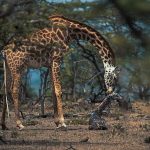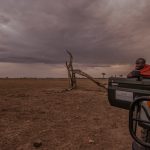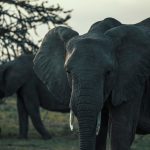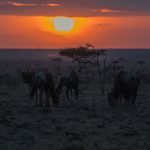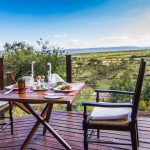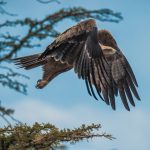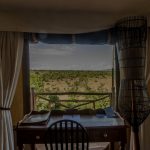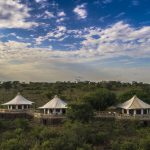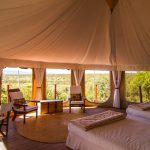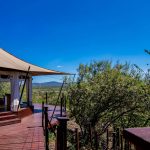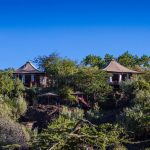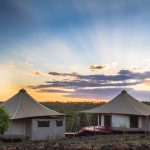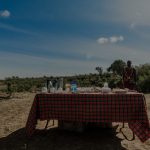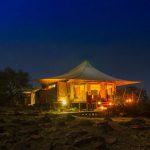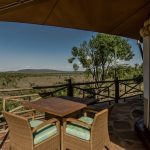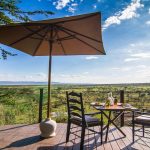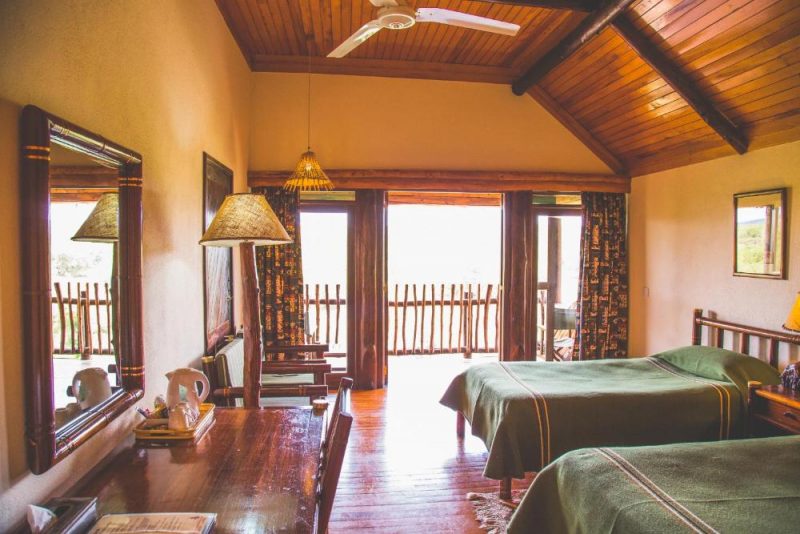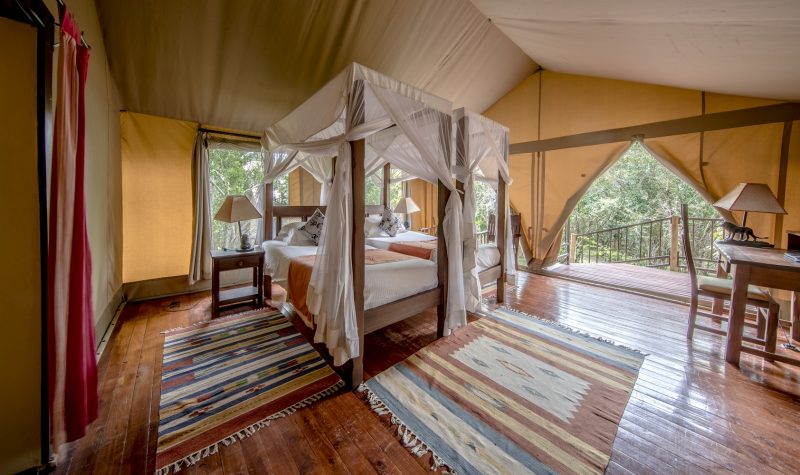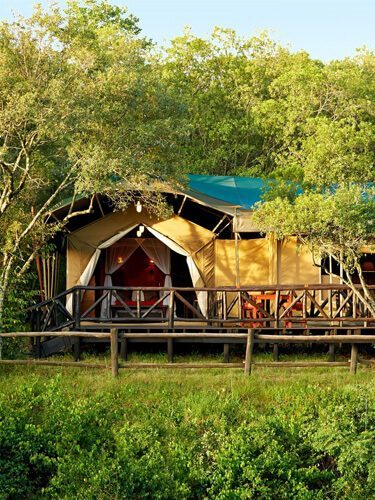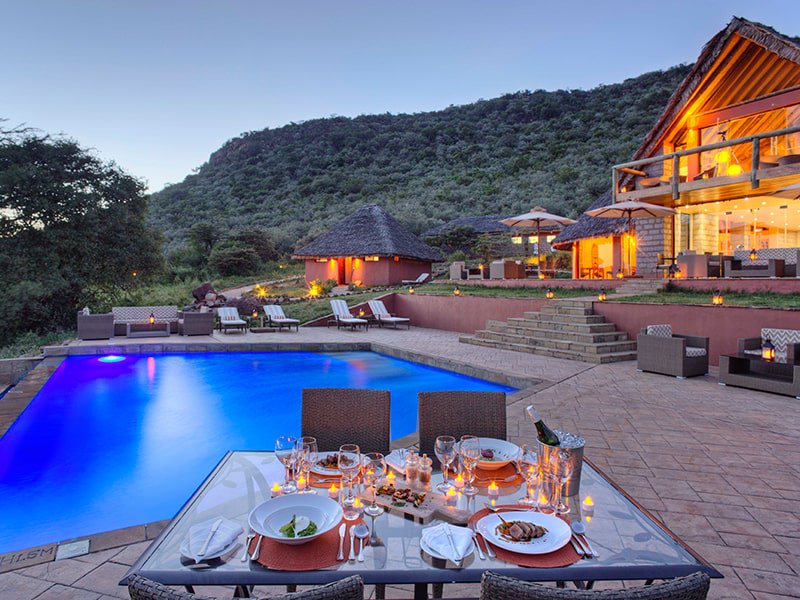Shs. 56,870/- ground-package per person per night at Ol Seki Mara
Valid until 31 May 2025
Ground packageDouble: Shs. 56,870/- per person per night Single: Shs. 84,020/- per night |
IncludesAccommodation on full-board basis Local departure taxes Day and night game drives Ol Seki airstrip transfers Soft drinks, beers, wines and selected spirits |
Children6 to 16 years – Shs. 33,610/- |
To book this package please fill out the following form or simply email us on safaris@safari-center.com
Ol Seki Mara
Ol Seki Hemingways Mara is located in Naboisho conservancy which borders the Maasai Mara reserve. It offers a private safari experience. We have a choice of ten exclusive tents in which to host you. There is no typical day at Ol Seki Hemingways Mara. We’re small and aim to personally tailor every day to suit what you.
Location
Stretching to 200 km² northeast of the Mara Reserve, Naboisho Conservancy includes contributions from over 500 Maasai landowners. Conservancy fees are directed back to the landowners. Naboisho limits the number of tourists permitted to enter. Naboisho has one of the highest densities of lion in Africa. It also has impressive numbers of elephant and giraffe.
Accommodation
Ol Seki Hemingways Mara’s tents are on platforms. The 270-degree view from the tents takes in the slope of the acacia scrub where animals graze in the shade of the sparse trees. Beyond the vista, the Ngama hills hem the horizon to the east and beyond lie the plains. It is situated at the north-eastern tip of one of the finest eco-systems on earth. Naboisho is a healthy region of biodiversity.
Tents
We have 10 stylish tents, all with en-suite bathrooms. Each one is designed to offer secluded privacy and spacious accommodation in safari-chic muted tones. We have six domed tents and two expansive family suites. Hot running water blasting through rain showerheads and elegant flush loos are a feature of every en-suite bathroom. These low impact structures are camouflaged by the landscape and are fashioned for sustainability. Every tent sits on a private vantage point up on the rocky escarpment. Its offers 270° view of the bush from your bed. Beyond the immediate vista, the Ngama hills hem the horizon to the east and beyond lie the plains of the Maasai Mara.
Simba tent
Complete with a private dining room and living area, which connects two enormous double bedrooms, both en-suite, the Simba tent is perfect for families. There’s a fully stocked bar and fridge and you can decide the level of service you require – we can provide a butler to be present at all times or we can make our staff invisible and give you complete privacy.
Guest areas
Small and cozy our guest areas are all about the view overlooking your own private watering hole where you will often see all kinds of plains game venturing for a much needed drink. At night, you will find yourself in the warm glow of the paraffin lanterns and candlelight, the hazy bush noises singing in the background as you survey the Koyaki plains.
The Library
Furnished with beautifully comfortable leather sofas and arm chairs, this is the quintessential safari scene that has remained largely unchanged for a century or more – no modern technological interruptions of digital noise or flashing images. Compare yourself to other safari-goers over the ages, captured in sepia images in coffee table books. Or contrast your experiences to those described in racy fiction of heady safari romances and dangerously wild encounters.
The Deck
Descend from the Library to the low deck, following the lantern-lit pathway. From this ledge, where the evening campfire blazes, you have an excellent view of the waterhole and the stars. Many warm evenings have been whiled away here in canvas safari chairs watching the sun set as our staff offer up the perfect G&T and some delicious nibbles. Sinking a scotch and soda under the stars while the fire roars and the crickets hiss in the great outdoors is so memorable – it’s unlike any other bar you will ever have frequented.
Dining
Our experienced chef will impress you with a varied menu while our staff will pour your drinks. The beauty of our catering is its mobility – wherever you are in the Conservancy or the Reserve, you can indulge in excellent fresh food served on china plates and chilled drinks poured into real glasses. As well as being mobile we’re also flexible. Breakfast can be before you head out for a morning game drive or after you come back. Lunch can be a perfect picnic out in the Reserve or a light lunch back in camp. After a long day on safari, afternoon tea is delivered to your room as you take a few hours to relax and re-energise. And if all that’s not enough, enjoy a 4 course dinner in camp or out in the bush under the stars.
Dining Tent
With a near panoramic view of the acacia scrub beyond your table, the dining tent will excite your senses. Breakfast offers a healthy continental buffet and a hearty and familiar English breakfast with our chef on hand to prepare your eggs exactly as you like them. Lunch will re-energise after the morning’s excursions and dinner is sumptuous with an extensive repertoire of classic dishes made with locally sourced ingredients.
Private Dining
Perhaps you might prefer the solitude of a private al fresco meal on the deck of your tent. In the Nina tents, we will serve you from the kitchen and our waiters will attend to you unobtrusively. In the Chui and Simba tents, we can give you a private chef for the night who will cook in your personal kitchen and serve you at your own dining table.
Safari dining
Our kitchen is totally mobile so don’t be surprised if you find the dining floor is the grassy plain of the conservancy one evening or if the kitchen one morning is transformed into a tree trunk and trestle table. Our specially designed safari coolers and hampers make for the most luxurious picnic lunches too.
Local produce
We always try to support local producers and enterprises as much as we can in the produce we buy. We source our eggs from a group of local Maasai ladies in the nearby village of Nkoilale, we grow organic herbs in our own shamba within camp and source additional items when required from local sellers at the Monday market in Nkoilale.
Activities
The privilege of a private conservancy is 200km² to explore exclusively. Naboisho is your secluded wilderness, away from the flash and chatter of tourists. There’s so much to discover here – myriad wildlife indigenous to East Africa, as well as the wild birds and plants. You might like to meet the local Maasai herdsmen and their families and learn about their pastoral way of life. Or take a hike, visit a N’dorobo cave, watch birds, photograph the sunset, dine under the stars, soar above the plains in a hot air balloon or have an exciting horseback safari. You’ll love the personally tailored experience Ol Seki Hemingways Mara offers in the hands of our attentive, observant guides.
Game Drives
Days are as action packed or as relaxed as guests want and being in a conservancy means we have the freedom to head out on game drives whenever suits; that might be at first light to capture the sunrise and an early morning cheetah hunt or that might be after dark to experience some of the alternative wildlife that you wouldn’t see during the day. Especially during the months of the migration, many guests do enjoy one full day in the Mara Reserve itself, along the main rivers in the hopes of spotting a wildebeest crossing. We will of course arrange this for you, sending you out with a lovely picnic lunch and the drinks of your choice to enjoy the day.
Guided Walks
Being in a conservancy we are also able to offer guided walks through the wilderness where you have the chance to learn about the area, the Maasai culture and all the plants of the region and their traditional uses. You’ll also have the chance to learn the tracks and scat of the animals that have passed by that day.
Community Visits
As we work so closely with the local community, we have also been invited to take our guests along to some of the local village homes for an introduction into the Maasai lifestyle. There is always beadwork and carvings for sale during these visits so this is a perfect time to collect your souvenirs with the added benefit that your money contributes directly to the local Maasai women producing these exquisite artefacts. Don’t be afraid to bargain and barter however, it is expected.
Balloon Safari
One of the iconic experiences of a safari in Africa, a sunrise hot air balloon flight over the Mara Reserve is a great way to get a different perspective on the park. The early morning Mara breeze will float you southwards towards Tanzania and as you follow the Mara River all the wonderful animals of the Mara are visible. The flight usually lasts about an hour and once you’re safely back on solid ground, celebrate the early morning escapade with a champagne breakfast in the bush.
Horseback Safari
Explore the spectacular wilderness of the Mara Reserve on horseback. A morning’s horseback safari will give you a chance to experience the wild savannah of the Mara up close. During the adventure, you will probably come across the paw prints of lions rather than the footprints of human beings. There are also well trained and experienced guides to ride with you and show you the ropes. After the unforgettable adventure, treat your horse with a horse-friendly cookie for a job well done. Don’t just drive, ride.
Climate & weather
Wildlife is abundant throughout the year in the Maasai Mara and game viewing is possible at all times. However, the weather and accessibility of certain areas does change depending on the rains which normally arrive between May to June and during November. The Maasai Mara is cooler than Nairobi and the Kenyan coast. It sits at an altitude of 5,000 to 7,000 feet above sea level, so it is greener and more moderate in temperature than other regions of Kenya. Temperatures range from 30° C maximum during the day to a cooler 10°C at night.
Conservation
Given our location, we are proud to be a participating member of Eco Tourism Kenya. Our camp is a semi-permanent structure and we’re continuously striving to reduce our footprint. As well as being environmentally responsible, we also directly contribute to the livelihoods of local communities through employment opportunities within the camp. Over 60% of our camp staff are local Maasai, some of whom have never had the opportunity to go to school. We provide training to them offering them the opportunity to develop professional skills which they use to support their families.
Community
The funds from these visits contribute to the education of village children. We also support local craftswomen who sell their wares to our guests; this in turn encourages the survival of indigenous skills such as weaving and carving. Revenue from the trade of souvenirs has enabled the women to buy donkeys to support them in their long journey to market at Nkoilale, bearing their goods. We also buy milk and meat from the local herdsmen to support their agricultural enterprise and feed our camp staff. Together with our partners in Naboisho Conservancy we’re also actively engaged in numerous conservation and community projects aimed at conserving the land and wildlife and providing a sustainable livelihood for local Maasai communities. In 2016, Naboisho Conservancy was the overall winner at the African Responsible Tourism Awards in recognition of the ways the conservancy truly brings together community and wildlife conservation.
Wildlife
Elephants crash through the acacia scrub and hippos submerge themselves in the slimy pools. Our guides will train your eyes to distinguish the creatures from their camouflage. Mara is home to Africa’s Big Five. The plains are the setting for the ultimate wildlife spectacle – the Great Migration. Two million herbivores risk life in search for grass. There are over a thousand bird species to be found. When time allows, the sounds and smells of Mara will keep you enthralled.
Naboisho Conservancy
Naboisho has a higher density of wildlife than the Maasai Mara National Park. In fact, with over 100 lion living in the vicinity it has one of the highest lion densities in the world. It’s also home to the largest pride – over 20 – in the Greater Mara region. Such an abundant lion population would obviously not be possible without a healthy wildlife food chain below it. The conservancy boasts impressive herds of elephant, giraffe, wildebeest, and zebra. It’s also home to Kenya’s rare wild dog. In addition to an abundance of resident game, the Conservancy also serves as a migration corridor for several hundred thousand animals between the Mara Reserve and the Loita Plains in the east. This ensures that migratory cycles and patterns are not disturbed and offers some of the best game viewing experiences anywhere on the planet just a foot from your tent.
Origins
The camp is named after the Ol Seki tree, which in the local Maasai language, means, blessed. It’s a peace tree and the branches are used to settle disputes. This is apt because the creation of Naboisho, which means “coming together”, has brought peace between agriculture and wildlife in the conservancy and has helped to forge a harmonious relationship between the local Maasai and tourism enterprises in the area. The name explains how this conservation area was created. It’s a community driven alliance that protects the flora and fauna of this precious region and supports the landowners and farmers through tourism.
Geographical location
The Naboisho Conservancy is a 200km² community pastoralist and wildlife conservation area. It borders the Mara Reserve to the south west, the Olare Orok Conservancy to the west and the Ol Kinyei Conservancy to the east. Naboisho is the second largest conservancy in the region and represents a community response to the challenges of privatisation of group ranches in the Greater Mara region. The conservancy was established in 2010 and provides the opportunity to conserve the land and the wildlife, whilst simultaneously creating wealth for the local Maasai landowners of which there are approximately 500.
The population
The population distribution around the Naboisho Conservancy is estimated to be a little fewer than 23,000 people. The Maasai have maintained a pastoralist way of life, co-existing with wildlife for several thousands of years. Livestock farming is the main source of livelihood along with income for the landowners who have leased their land. The creation of the conservancy is an opportunity not only to conserve the wildlife, which is under threat from human activities and land-use changes, but will also help to diversify the livelihoods of the Maasai so that they can cope with the climatic fluctuations that are common in the drylands.
The Migration
From the vast Serengeti plains to the hills of Kenya’s Maasai Mara over 1.4 million wildebeest and 200,000 zebra and gazelle, tirelessly tracked by Africa’s great predators, migrate in a clockwise direction over 1,800 miles each year in search of grazing territory. The Serengeti National Park/Maasai Mara Reserve is arguably the most impressive wildlife sanctuary in the world. From mid- December through to March, the vast and unending plains of the southern Serengeti are inhabited by thousands and thousands of wildebeest and zebra. The great herds graze on rain-ripened grass before they begin their incredible journey covering miles of African soil.
The journey
There is no real beginning or end to a wildebeest’s journey. Its life is a constant search for food and water. The only beginning is at the moment of birth. An estimated 400,000 wildebeest calves are born early each year. The vulnerable calves attract the attention of predators. After the birth of the calves, the wildebeest spread out over the plains of the southern Serengeti. With the advent of the long rains in April and May, the herds have abundant food and water and they take full advantage; roaming across the entire area in search of the richest grazing. By the end of May, with the start of the dry season, the grasses start to vanish and the animals migrate toward the fresh pastures of the northern Serengeti. This movement coincides with the mating season.
Herd mentality
Small herds start to form as each dominant male gathers up a harem and competes with the other males for the right to mate. The deep lowing of the dominant males and frantic territorial battles resound across the plains as nearly half a million animals breed within the same month, thus ensuring that next year the calving will occur en masse once again. By June the calves born this year are now a strong and healthy 3 to 4 months old, able to keep up with their mothers during the long trek across the plains without slowing down the herd.First one, then another, of the small groups starts to walk north, forming lines that drift across the plains. Rutted paths are left behind as the only sign these vast herds were ever present.
The river crossings
The wildebeest river crossings, with thousands of animals massed upon a riverbank, are probably among the most famous of the wildlife images provided by East Africa’s savannahs. As the wildebeest head north and west in search of new grasses, they meander across the plains of the Serengeti towards the Western Corridor of this vast park, and on into the Maasai Mara Reserve in Kenya. Large rivers, such as the Mara, bisect the savannah and form formidable obstacles to cross, especially for the older, weaker animals and the very young.
Hazards
Home to swift flowing waters and huge crocodiles, the rivers are a challenge to cross at the best of times, let alone when the pressing weight of the herds behind force animals into the rivers without being able to choose an easy route. With rough, rocky bottoms hidden beneath silt-laden waters, the rivers catch many animals unawares, trapping feet or breaking legs after a cliff jump. The moment an animal is unable to move, it is lost. Either to the waiting predators hidden beneath the waters, or simply trampled under the passing herd. The predators wait as well, adding to the mayhem, with crocodiles eating more or less their entire years’ supply of meat in just a few weeks. Lions wait on the river’s edge, pouncing on a skittish calf or thirsty mother. Visiting the Mara during August to October offers a truly unique and unforgettable experience.
Mara Reserve
Maasai Mara forms part of the huge Serengeti eco-system. It spreads over 1510 square km of rolling plains. Not only is the Mara blessed with this stunning landscape, but also its animal diversity is one of the greatest in Africa. Surrounded by the grazing lands of the Maasai people, the Mara is a sanctuary for all of the “Big Five” animals: lion, elephant, buffalo, rhino and leopard. The sweet grasses and abundant water ensure a full complement of plains game such as the impala and Thompsons gazelle whilst the deep river pools provide homes for hippo and crocodile. A Kenyan safari in the Mara never fails to deliver. It offers an unbelievable experience for first timers, seasoned travellers and safari enthusiasts alike. Its breath-taking beauty, combined with its astonishing diversity of wildlife, ensure that the Mara is one of the most popular stops on a Kenyan safari.

